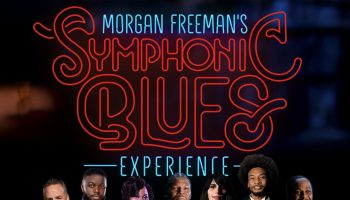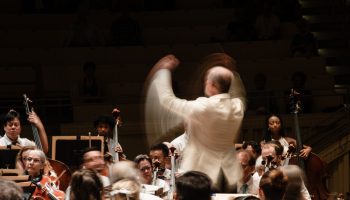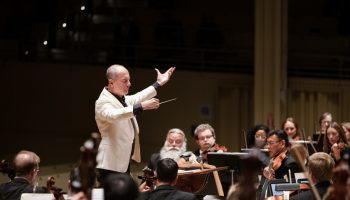
Gabriel Weber
Staff Writer
The music of this evening’s “Summer Stories” is more like a perfume in its sensuality and the way that people can feel it, but can’t quite hold on to it — and the program is complete with “one of the greatest orchestrators of the 21st century” in Maurice Ravel, per Music Director and Principal Symphonic Conductor Rossen Milanov.
The Chautauqua Symphony Orchestra performs under Maestro Milanov’s baton at 8:15 p.m. tonight in the Amphitheater with delightfully dichotomous works. With a program of George Gershwin’s “Porgy and Bess: Symphonic Picture,” then Ravel’s “Mother Goose Suite” and “Boléro,” tonight’s CSO is a big percussion concert, Milanov said.
The main piece is “Boléro,” written in 1928 is widely considered one of the most famous tunes in classical works. It has a pure tune and then a passionate, meandering and expressive theme, Milanov said; it goes through many permutations throughout with changing administration in instrumental teams.
During the piece’s first performance at the Paris Opéra in 1928, through a rambunctious audience, a woman was shouting, “Au fou, au fou!” (“The madman! The madman!”) When Ravel was told of this, he apparently said, “That lady … she understood.”
“The piece itself does not really go anywhere in terms of developing the musical material. We’re just addressing these things differently every time,” Milanov said. “It’s a novel expression of what 20th century music could do.”
Ravel’s “Boléro” is based on one long, gradual crescendo and has 17 minutes straight of snare drum played tonight by Principal Percussionist Brian Kushmaul and the second snare drum part by Pedro Fernandez.
“ ‘Boléro’ is really a study on orchestration in how the same rhythm and themes sound when they’re played by different instruments or by different combinations of instruments, how the timbre and the texture in the orchestra changes,” Fernandez said.
Ravel composed “Mother Goose Suite” in 1908 for two of his close friends’ children, Mimi and Jean Godebski, who were 8 and 10 years old, respectively. It is a true Impressionist piece, Fernandez said, who is drawn to the evocative nature of Impressionism; it’s altogether “playful, beautiful and dreamy,” he said.
“The artists portray an impression of a picture that could be not very obvious unless you get closer — and once you get closer it’s something else,” Fernandez said. “I suppose the different movements could be seen as adventures of the little geese that the mother’s trying to bring up.”
There’s a sense of “childlike simplicity,” Milanov said about “Mother Goose,” as it was inspired by Charles Perrault’s collection of fairy tales.
The opera Porgy and Bess, which debuted in 1935, was inspired by the novel Porgy by DuBose Heyward; the story follows a beggar named Porgy who is in love with a woman named Bess, but when they commit to a life together, they’re plagued by both Crown (her ex-lover) and Sportin’ Life (her drug dealer). Tonight, the CSO will perform “a medley of the most popular tunes from Porgy and Bess,” Milanov said.
Gershwin has his own ties to Chautauqua, as he composed his Concerto in F on the grounds in one of the School of Music practice cabins, which is commemorated by a plaque. While Concerto in F was written a full 10 years before Porgy and Bess, they both draw influences from jazz and popular music styles.
Porgy and Bess is “more straightforward (to follow) because it comes with an opera,” Fernandez said. Still, he said, the fusion of jazz with classical music is challenging rhythmically.
For Fernandez, the visual aspect of how percussion creates the sound was a draw when he began playing at age 8.
“Percussion instruments are created for every purpose — that also caught my attention,” Fernandez said. “How do they manage to get that sound? What does a water drop sound like?”
Having excelled at a national level in mathematics and physics, Fernandez finds that, in a similar way, music is centered around problem-solving.
“The problem-solving is either for nourishment or entertainment — however the audience wants to experience the concert — in order to try to figure out what the composer was trying to say,” Fernandez said.
With the technical demands of this performance, Ferndandez finds himself moved when his colleagues play their solos so beautifully.
“It’s impressive the control that musicians have to have over their instruments, especially for those of us in it who understand what it takes to gain that amount of control — that’s why we constantly do this year-round,” Fernandez said. “Every time somebody plays something and just nails it, it goes to show the amount of effort and hours behind their instrument.”




